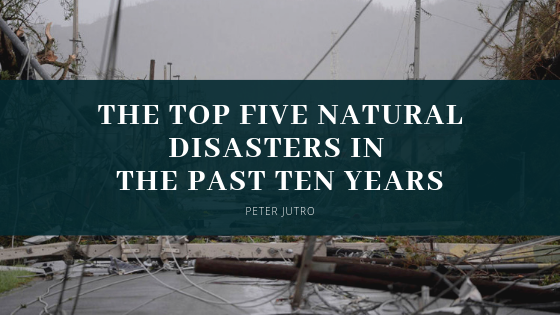We all know that the number of natural disasters has increased over the past ten years. These disasters include wildfires, floods, hurricanes, earthquakes and tsunamis. There are many factors that are responsible for them, whether they are geophysical or climate-related. Geophysical disasters include volcanic eruptions, earthquakes, tsunamis, and avalanches, whereas climate-related disasters can include flooding, storm surges, the number and intensity of tropical cyclones, and droughts. There is no denying that natural disasters have reshaped emergency management as well as volunteer organizations around the world. Let’s take a look at a few of the top natural disasters of the past ten years.
1) Haiti Earthquake — On January 12, 2010, a magnitude 7 earthquake struck the island of Hispaniola, with its epicenter west of Port-Au-Prince. It affected millions of people: 250,000 deaths, 300,000 injured and an estimated 5 million displaced. The earthquake hypocenter was 6.2 miles below a densely populated area, and resulted in a powerful effect at the ground level. Buildings crumbled because they were poorly built, and in Haiti, because effective building codes were generally not enforced.
2) Sichuan Earthquake — Also called the Great Wenchuan Earthquake, the magnitude 8 earthquake struck Sichuan Province in south-central China on May 12, 2008. Nearly 90,000 people were killed and 375,000 injured; a middle school was buried by boulders. The quake occurred on the Longmenshan Fault, along the Indian-Australian and Eurasian plates boundary.
3) Hurricane Maria — Puerto Rico, Dominica and the U.S. Virgin Islands were hit hard by this September 20, 2017 category 5 hurricane, first estimated to have killed 64 people. According to subsequent analyses, an additional 4,600 “excess” deaths were attributable to the hurricane; some of which were the result of illnesses developed from unsanitary conditions, problems with cell phone reception, and the inability of first responders to reach victims due to traffic, largely the result of debris obstructed roads.
4) Hurricane Sandy — also called Superstorm Sandy, struck the U.S. on October 26, 2012. This massive hurricane affected 24 eastern states as well as the Caribbean, Cuba and Canada.147 deaths in the U.S., Canada and the Caribbean were attributed to Sandy, and the cost of damages has been estimated at over $71 billion. It made many areas recognize their vulnerability to storm damage for the first time.
5) The Great East Japan Earthquake — This was the most powerful earthquake in Japan’s recorded history. On March 11, 2011, a magnitude 9 earthquake occurred off Tohoku, on Japan’s Pacific coast. It caused nearly 16,000 deaths, and perhaps most significantly, meltdowns at the Fukushima power plant reactors. The damage to the Fukushima plant was largely the result of a tsunami was triggered by the earthquake. It flooded the plant and some 200 square miles of land. Much of the region near Fukushima is still uninhabitable years later.

